Ceiling insulation is crucial for maintaining comfort and energy efficiency. Insulated ceiling tiles, radiant barrier panels, cellulose insulation, spray foam insulation, and reflective foil insulation are five efficient ideas.
Heat is reflected away by reflective foil, an airtight seal is made with spray foam, and gaps are filled with cellulose insulation. While insulated ceiling tiles provide insulation in addition to being aesthetically pleasing, radiant barrier panels limit the transfer of heat. The best way to insulate is to consult a professional.
List of 5 Ceiling Insulation Ideas.
- Reflective Foil Insulation:
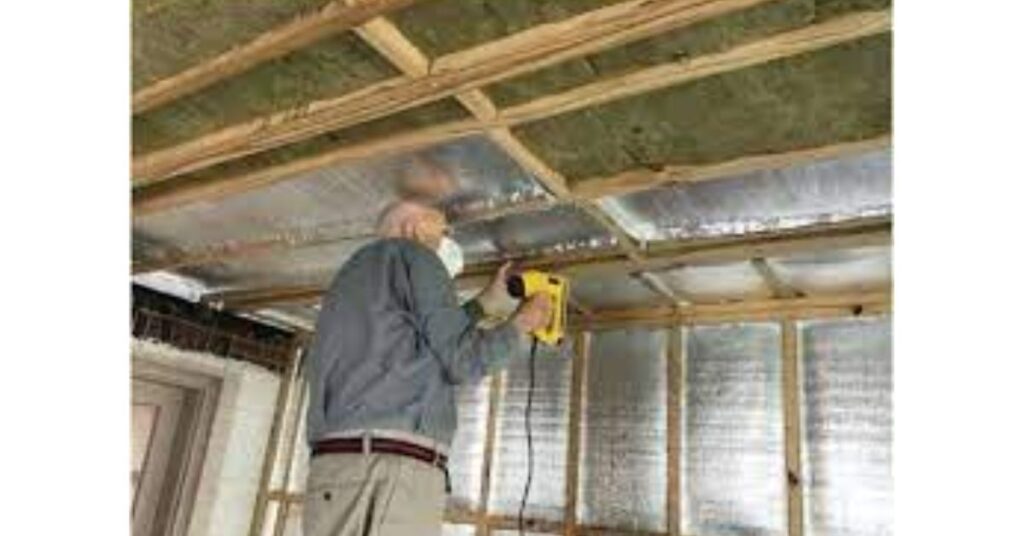
Install reflective foil insulation on your ceiling to achieve the desired effect. In warm weather, this material dissipates heat and retains warmth in the winter. It’s a useful technique for controlling interior temperature.
- Spray Foam Insulation:
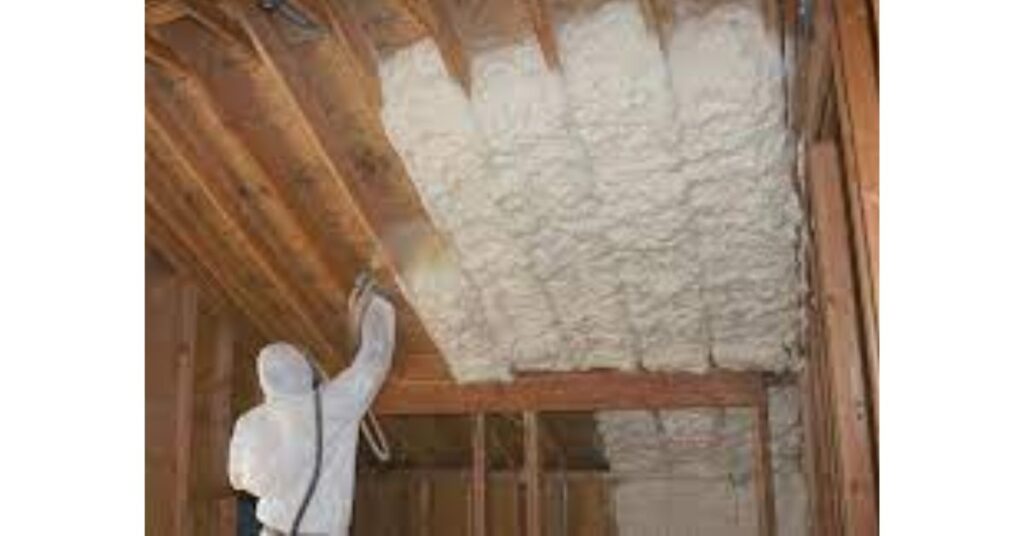
Give spray foam insulation some thought. By sealing the space tightly, it stops drafts and keeps the temperature constant. Additionally, spray foam offers superior soundproofing.
- Cellulose Insulation:
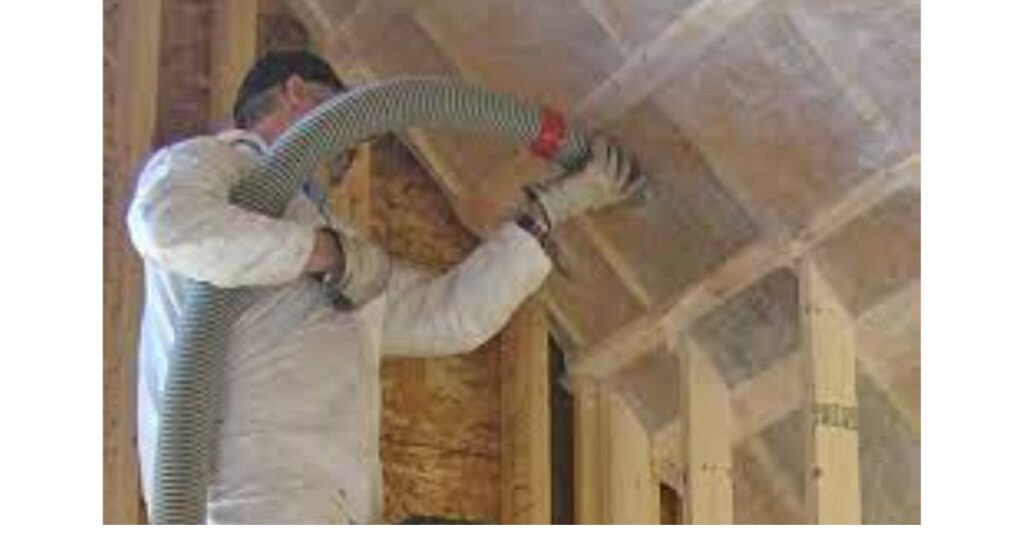
Composed of plant fibers or recycled paper, cellulose insulation is environmentally friendly. It fills in spaces and offers efficient thermal insulation when blown into the ceiling cavity.
- Radiant Barrier Panels:
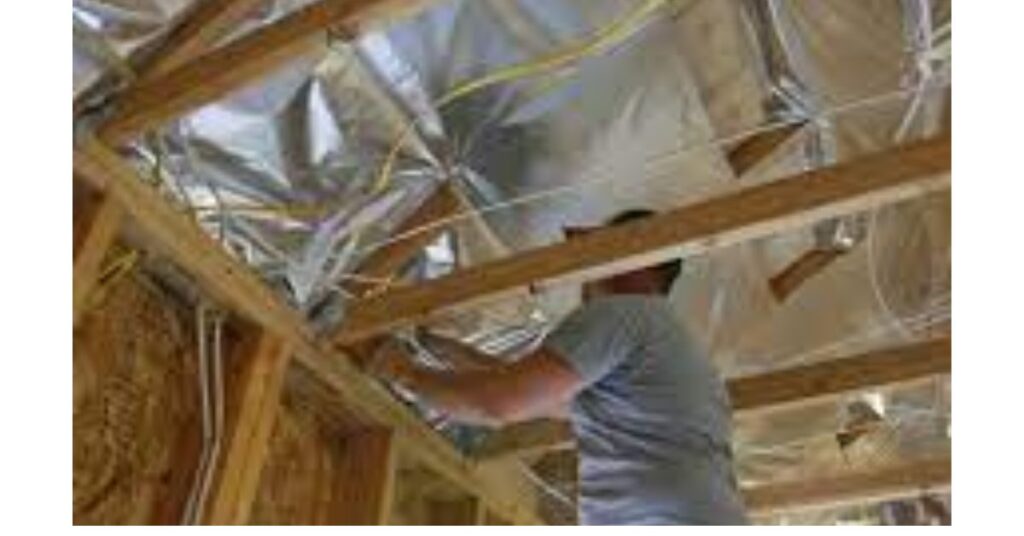
Install radiant barrier panels beneath your roof to achieve this. The heat transfer from the sun is lessened by these reflective panels, keeping your
- Insulated Ceiling Tiles:
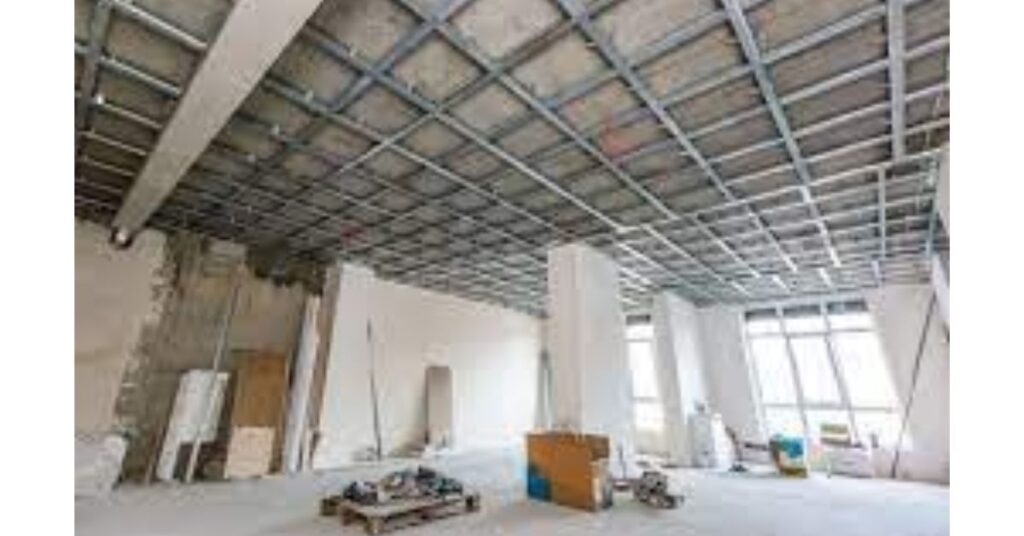
These are a stylish option to consider if you’re searching for something special. They offer insulation as well as visual appeal and are available in a variety of styles and materials.
Don’t forget to get professional advice to find the ideal insulation technique for your unique requirements. Stay warm while using less energy! 🏠❄️
Understanding the Need for Effective Ceiling Insulation
According to Department of Energy insulation is important for energy savings. so Let’s examine the significance of good ceiling insulation and the issues that arise from insufficient insulation:
A. The Benefits of Ceiling Insulation for Comfort and Energy Efficiency:
- Thermal regulation: A well-insulated ceiling serves as a barrier to stop heat from escaping your house and entering the outside world. It lowers heat gain during the sweltering summer months, keeping your living areas cooler. It reduces heat loss during the colder months by aiding in warmth retention.
- Energy savings: Less artificial heating and cooling is required when ceilings are well-insulated. You’ll use less energy as a result, which will save your utility costs.
- Comfort: All year-round comfort is ensured by insulation, which keeps interior temperatures constant. It keeps your home warm and comfortable by preventing drafts, cold spots, and overheating.
B. Common Problems with Inadequate Ceiling Insulation:
- Temperature Fluctuations: Your house is vulnerable to sharp variations in temperature if it is not properly insulated. Your living spaces may become uncomfortable due to heat infiltration in the summer and cold drafts in the winter.
- High Energy Bills: The heating and cooling systems in your home have to work harder due to inadequate insulation. Utility bills rise along with energy consumption as a result of this inefficiency.
- Condensation and Moisture: Inadequate insulation may cause a build-up of condensation in the ceiling cavity. Health problems, mold growth, and structural damage can all be brought on by moisture.
- Noise Transmission: Sound easily passes through the ceiling due to inadequate insulation. In addition to controlling temperature, proper insulation also has soundproofing properties.
- Reduced Lifespan of HVAC Systems: Premature wear and tear from overworking HVAC systems brought on by insufficient insulation can reduce the systems’ lifespan.
In conclusion, comfortable living, energy economy, and general health depend on adequate ceiling insulation. To enjoy these benefits, think about updating your insulation! 🏠❄️
Exploring Cutting-edge Ceiling Insulation Techniques
As we venture into the realm of innovative ceiling insulation, let’s recap the importance of dynamic solutions and reinforce the benefits of each strategy. Whether you’re a homeowner, an architect, or simply curious about transformative materials, these techniques can revolutionize your living spaces.
1. Aerogel Insulation: A Marvel of Lightness and Efficiency

Certainly! Let’s delve into the fascinating world of aerogel insulation for ceilings:
What Is Aerogel?
Aerogel is a remarkable material known for its ultra-low density and exceptional insulating properties. It is often referred to as “frozen smoke” due to its translucent appearance and lightness. Here are some key points about aerogel: Because of its lightness and translucent appearance, it is frequently referred to as “frozen smoke.” Here are some key points about aerogel:
- Composition: Aerogels are made up of a gel structure with a gas (usually air) in place of the liquid component, which is typically water.
- Structure: A highly porous and open-cell structure is achieved by carefully drying the gel.
- Density: Aerogels are among the lightest solid materials that humans have ever encountered due to their incredibly low density.
Insulating Properties of Aerogel:
Aerogels exhibit remarkable thermal insulation characteristics:
- Low Thermal Conductivity: Aerogels are very good at reducing heat transfer because of their exceptionally low thermal conductivity.
- Superior R-Value: Compared to more conventional insulating materials like fiberglass or foam, aerogels have a far higher R-value, a measure of insulation effectiveness.
- Hydrophobic Nature: Aerogels are hydrophobic by nature, which means that even when they get wet, they still retain their insulating qualities and repel water.
Benefits of Using Aerogel Insulation in Ceilings:
Why consider aerogel for your ceilings? Here are the advantages:
- Space-Efficient: Aerogels occupy little space and offer excellent insulating performance. For ceilings where every inch counts, this is essential.
- Energy Savings: By lowering the cost of heating and cooling, improved insulation results in energy savings.
- Thin Profiles: Aerogel blankets or panels are perfect for retrofitting existing ceilings because they are lightweight and thin.
- Fire Resistance: Aerogels have an additional degree of safety because they are naturally fire-resistant.
Real-World Applications and Success Stories:
Aerogel insulation has found applications in various fields:
- Space Exploration: NASA has used aerogels to insulate spacecraft and protect against extreme temperatures.
- Building Construction: Architects and builders incorporate aerogels in energy-efficient buildings.
- Oil and Gas Industry: Aerogels insulate pipelines and equipment in harsh environments.
- Historical Preservation: Aerogels help preserve delicate artifacts in museums.
2. Radiant Barrier Insulation: Harnessing the Power of Reflection
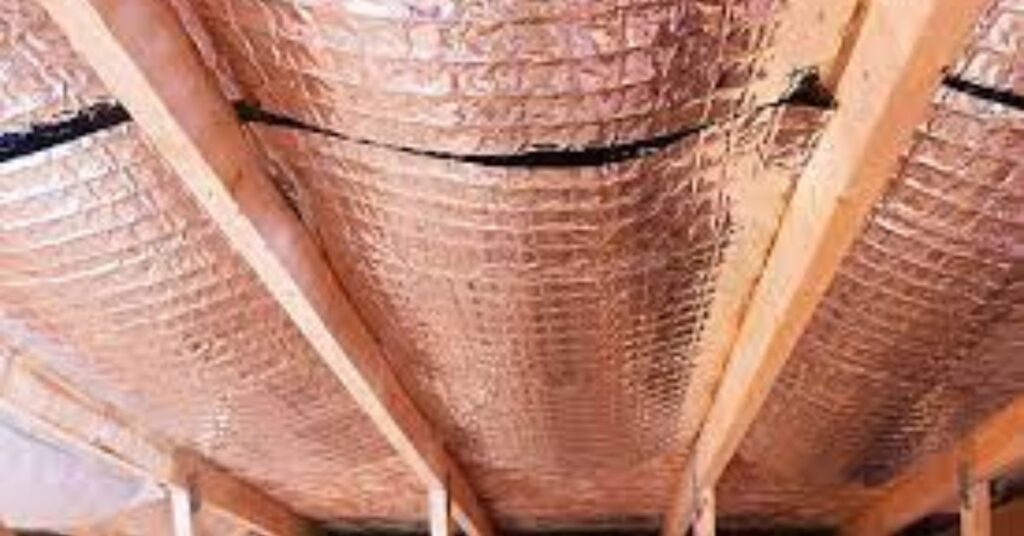
Certainly! Let’s explore the fascinating world of radiant barrier insulation for ceilings:
1. What Is Radiant Barrier Technology?
Specialized materials called radiant barriers are made to reflect radiant heat instead of absorbing it. Radiant barriers concentrate on radiant energy, or the heat that travels as electromagnetic waves (infrared radiation), as opposed to traditional insulation, which primarily resists conductive heat transfer. This is an overview:
- Composition: A thin layer of highly reflective material, frequently metalized film or aluminum foil, makes up radiant barriers.
- Installation: They are usually placed facing the radiant heat source, which is usually the sun, in attics, roofs, or ceilings.
How Radiant Barrier Insulation Works:
The reflection principle serves as the foundation for radiant barrier operation. This is how they operate:
- Reflectivity: A large amount of radiant energy, such as sunlight, is reflected towards the heat source by the barrier when it strikes it.
- Minimal Absorption: Radiant barriers don’t absorb heat as conventional insulation does. Rather, they deflect it off.
- Air Gap: The efficacy of the barrier is increased when there is an air gap between it and the ceiling. Direct contact with the ceiling material is avoided by this gap.
Advantages of Incorporating Radiant Barriers:
Why should your ceiling insulation system take into account radiant barriers? Let’s examine the advantages:
- Heat Reduction: The quantity of heat that enters your living area is greatly decreased by radiant barriers. This is particularly useful in warm climates.
- Energy Efficiency: Radiant barriers minimize the need for excessive heating or air conditioning by reflecting heat and helping to maintain a comfortable indoor temperature.
- Cost savings: Over time, lower utility bills are a direct result of reduced energy consumption.
- Easy Installation: Radiant barriers are appropriate for both new construction and retrofits because they are lightweight and reasonably simple to install.
- Durability: They are enduring and do not deteriorate over an extended period.
Real-World Applications:
Radiant barriers are commonly used in:
- Residential Homes: To increase overall energy efficiency and maintain a colder attic.
- Commercial Buildings: Less heat gain is advantageous for factories, warehouses, and offices.
- Greenhouses: To control temperature and shield vegetation from intense heat.
3. Spray Foam Insulation: A Versatile Solution
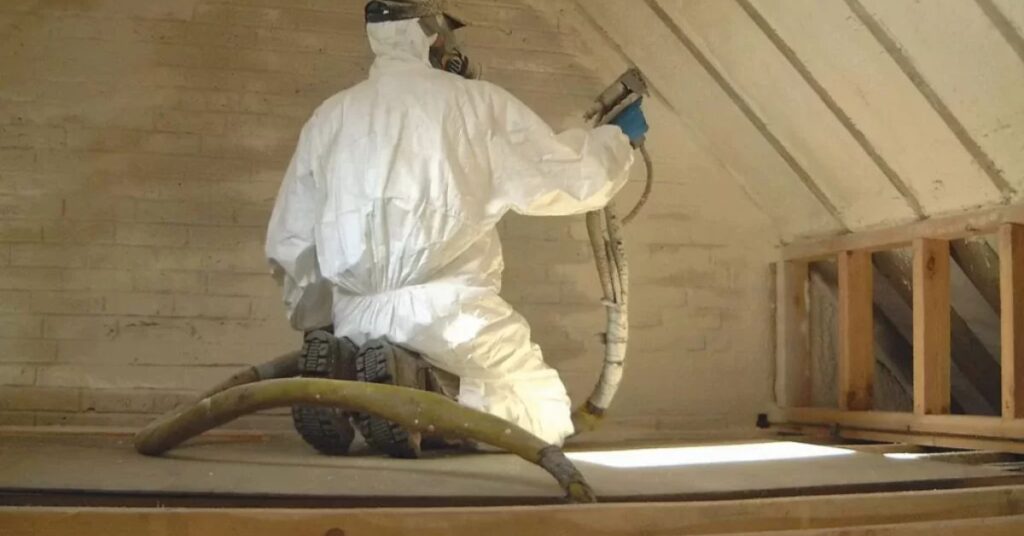
Certainly! Let’s explore the world of spray foam insulation for ceilings:
Introduction to Spray Foam Insulation:
An airtight and seamless barrier is created by the expansion of spray foam insulation, a polymer-based material. The salient points are as follows:
- Composition: Spray foam is made up of two ingredients that react when combined: isocyanate and polyol resin. The resultant foam solidifies and sticks to surfaces.
- Types: Spray foam comes in two primary varieties:
- Open-cell foam: Less dense and lightweight, it offers superior sound absorption.
- Closed-cell foam: Provides better thermal insulation because it is impermeable and denser.
Benefits of Spray Foam Insulation for Ceilings:
For your ceilings, why choose spray foam? Let’s examine the benefits:
- Thermal Efficiency: By minimizing heat transfer between indoor and outdoor spaces, spray foam effectively forms a thermal barrier.
- Air sealing: It creates a tight seal against air infiltration by expanding to fill voids, gaps, and cracks.
- Moisture Resistance: Because closed-cell foam is waterproof, problems relating to moisture are avoided.
- Noise reduction: The sound waves in your home are attenuated by open-cell foam.
- Energy Savings: Lower energy costs are a result of properly insulated ceilings.
- Durability: Spray foam insulation has a long lifespan, spanning several decades.
Considerations and Best Practices:
When installing spray foam insulation:
- Professional Installation: For accurate application, work with a certified installer.
- Safety precautions: Wearing the appropriate clothing is crucial when installing.
- Ventilation: Check that there is enough ventilation to let any off-gassing go away.
- Compatibility: Check for compatibility with already-existing materials (like electrical wiring).
- Thickness: Considering your climate, choose the right foam thickness.
4. Vacuum Insulation Panels: The Science Behind Efficiency
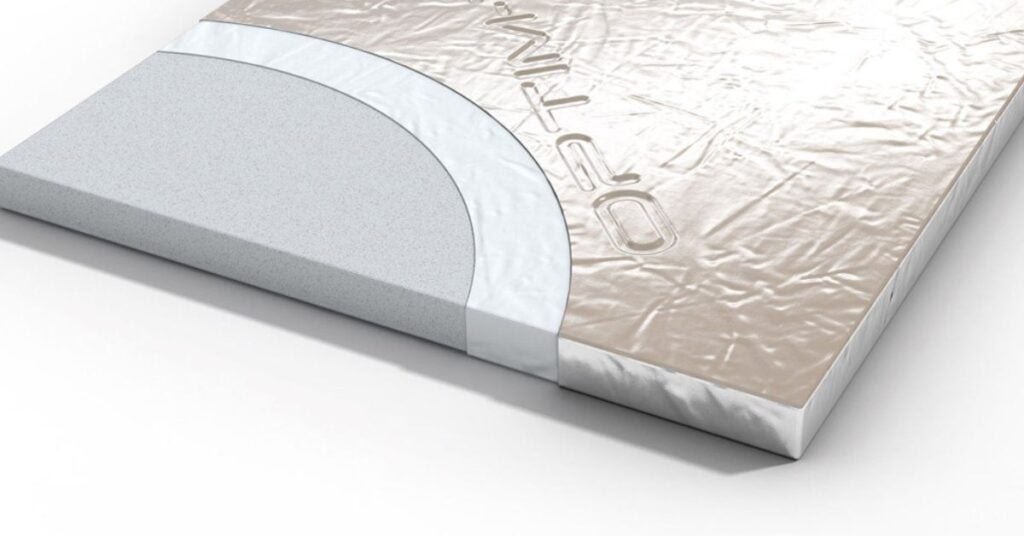
Certainly! Let’s delve into the fascinating world of Vacuum Insulation Panels (VIPs) for ceiling insulation:
What Are Vacuum Insulation Panels?
VIPs are cutting-edge insulation materials with a minimal thickness that are intended to achieve remarkable thermal performance. This is how they function:
- Core Material: VIPs are made up of an airtight barrier enclosing a core material, usually fiberglass or silica.
- Evacuated Space: A vacuum or nearly vacuum is created in the evacuated space, which is the result of the core being removed.
- Thermal Conductivity: VIPs have very low thermal conductivity when there aren’t many gas molecules present.
Advantages of VIPs:
Why should you use VIPs for ceiling insulation? Let’s examine their advantages:
- Space-saving: VIPs are perfect for spaces with limited space because they offer high insulation efficiency in a thin profile.
- Superior Thermal Resistance: Compared to conventional insulation materials, their R-value (thermal resistance) is higher.
- Energy Savings: Less heat transfer results in less energy being used for cooling and heating.
- Durability: VIPs are enduring and continue to function well over time.
- Moisture Resistance: Moisture cannot enter because of the airtight barrier.
- Non-Combustible: Because the core of a VIP contains no oxygen, it cannot catch fire.
Applications and Limitations:
When and what circumstances should you take into account when using VIPs?
- Applications:
- Building Construction: VIPs improve the insulation of ceilings, roofs, and walls in building construction.
- Appliances: They increase refrigerator and freezer energy efficiency.
- Transportation: Refrigerated trucks and containers are insulated by VIPs.
- Limitations:
- Cost: Compared to conventional insulation, VIPs may be more expensive.
- Fragility: Handling the core material requires caution due to its delicate nature.
- Edge Effects: If panel edges are not properly sealed, heat transfer may occur there.
5. Phase Change Materials: Balancing Heat with Elegance
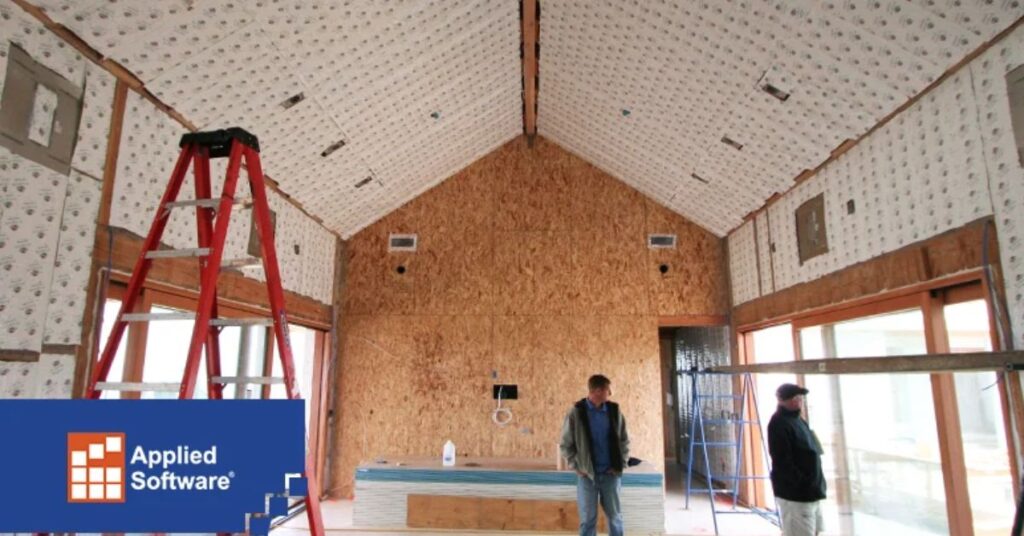
Certainly! Let’s explore the fascinating world of Phase Change Materials (PCMs) for ceiling insulation:
What Are Phase Change Materials?
Substances known as phase change materials change from a solid to a liquid or vice versa when temperatures fluctuate. This is how they function:
- Latent Heat: During phase changes, PCMs either release or absorb latent heat.
- Thermal Regulation: PCMs melt and absorb heat when the surrounding temperature rises. They solidify and release the heat they have stored as it cools.
Integrating PCMs into Ceiling Insulation:
How can PCMs be used to effectively insulate ceilings? Let’s investigate:
- PCM Panels: PCMs are embedded in these panels. The PCMs absorb extra heat as the room warms up during the day. They release heat that has been stored as the room cools at night.
- Ceiling Tiles: Use PCM-infused alternatives in place of conventional ceiling tiles. By serving as a thermal buffer, they keep the interior temperature comfortable.
- Phase Change Drywall: Passive temperature control is achieved through specialized drywall that has PCM layers.
Real-World Effectiveness:
Case studies highlight the impact of PCMs:
- Energy savings: PCM-enhanced ceilings reduce the need for air conditioning and heating in buildings.
- Comfort: Especially in severe weather, occupants benefit from more constant temperatures.
- Commercial Spaces: Stable indoor climates are beneficial for offices, hospitals, and schools.
- Historic Preservation: PCMs shield fragile museum pieces.
Implementation and Considerations
Certainly! Let’s delve into the factors to consider when choosing a ceiling insulation strategy and some tips for making an informed decision based on climate and budget:
A. Factors to Consider Before Choosing a Ceiling Insulation Strategy:
Climate and Region:
- Climate and Region:
- Cold climates: To keep heat inside, give high R-value insulation materials priority.
- Hot Climates: In hot climates, give special attention to materials that reflect heat and limit heat gain.
- Budget Constraints:
- Take into account the upfront costs for installation and materials. Certain tactics, such as aerogel, might cost more upfront but save money over time.
- Space Constraints:
- Choose thin-profile options like phase change materials (PCMs) or vacuum insulation panels (VIPs) if you have a small amount of ceiling space.
- Moisture Resistance:
- To stop mold growth and preserve the effectiveness of insulation, choose materials that are resistant to moisture.
- Fire Safety:
- Look into how fire-resistant the insulation you’ve selected is. Aerogels are among the materials that naturally resist fire.
- Ease of Installation:
- Think about whether you’ll hire experts or do the installation yourself. Certain materials need to be applied specifically, like spray foam.
Tips for Selecting the Most Suitable Insulation Solution:
- Evaluate Your Climate:
- Learn about the local weather patterns and climate. Select insulation based on your unique requirements.
- Understand R-Values:
- R-value calculates the efficiency of insulation. Better thermal resistance is provided by higher R-values. Match your climate’s R-value.
- Consider Cost-Effectiveness:
- Compare the outlay of funds, the savings over time, and the energy efficiency. Although they may initially cost more, aerogels and VIPs have several advantages.
- Explore DIY Options:
- Some tactics, such as radiant barriers, can be completed at home. Evaluate your abilities and readiness to perform installation work.
- Prioritize Energy Efficiency:
- Energy Efficiency: Insulation has a direct effect on electricity costs. Select materials that minimize the need for heating and cooling.
- Look at Longevity:
- Take into account the insulation’s lifespan. Certain materials are more durable than others, such as spray foam.
Conclusion:
Finally, by putting these innovative ceiling insulation techniques into practice, you can save a lot of energy and attain the highest level of comfort in your house. These concepts provide dynamic ways to improve your living space, from cutting-edge materials to creative installation methods. You will undoubtedly notice a difference in your daily life from the advantages of better insulation, whether you decide to DIY or hire professionals to install it. Thus, don’t put it off any longer; improve the insulation in your ceiling and see the benefits for yourself.
FAQ
Why is ceiling insulation important?
Ceiling insulation plays a crucial role in maintaining indoor comfort by preventing heat transfer between the interior and exterior of a building. It helps regulate temperatures, reduces energy consumption, and enhances overall comfort.
What are some benefits of upgrading ceiling insulation?
Upgrading ceiling insulation can provide several benefits, including improved comfort levels by regulating indoor temperatures, reduced energy bills due to increased energy efficiency, and enhanced noise reduction.
How do I know if my current ceiling insulation needs to be upgraded?
Signs that your ceiling insulation may need upgrading include fluctuating indoor temperatures, high energy bills, drafts or cold spots in your home, and evidence of moisture or mold growth.
What are some cutting-edge materials used in ceiling insulation?
Cutting-edge materials for ceiling insulation include aerogel, vacuum-insulated panels (VIPs), and phase-change materials (PCMs), which offer superior thermal performance compared to traditional insulation materials.
